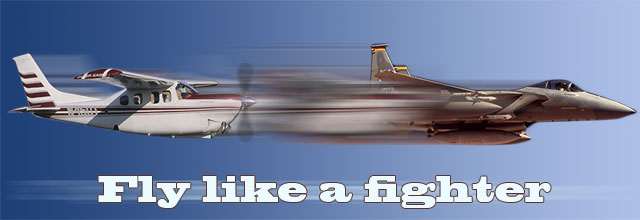The words “bail out” were never, ever to be spoken in an airplane unless you actually meant it. I hoped I would only ever say it in our flight briefings, but this would not be the case.
I was a brand new flight lead in the F-15, and at Kadena Air Base in Japan we had just started a new program to give the RF-4C reconnaissance fighter crews (pilot and weapons systems officer) some training in defensive maneuvering against other fighters—something they had not done before. My flight lead’s jet broke, so I went out alone against two RF-4s.
 On the third engagement, we got into some maneuvering with me getting behind the RF-4s. I closed to around 1,000 feet inside the wingman’s turn, but was about 500 feet below him without enough airspeed to pull my nose up to take a gun shot. This put me under their left wing where they couldn’t see me very well. While pulling about 4Gs, the pilot used ailerons to roll left to see me—a big no-no in any F-4. (You are supposed to roll with rudder). The jet immediately departed controlled flight.
On the third engagement, we got into some maneuvering with me getting behind the RF-4s. I closed to around 1,000 feet inside the wingman’s turn, but was about 500 feet below him without enough airspeed to pull my nose up to take a gun shot. This put me under their left wing where they couldn’t see me very well. While pulling about 4Gs, the pilot used ailerons to roll left to see me—a big no-no in any F-4. (You are supposed to roll with rudder). The jet immediately departed controlled flight.
From my position, they wound up 500 feet in front and 200 feet above me, had turned 90 degrees left from their initial heading, and were in 90 degrees of bank and 60 degrees nose low. In the next two to three seconds, they were in a left flat spin just to the left of me as the drag chute was deployed (a boldface procedure). I called for a “knock it off,” which was acknowledged by everyone, then I circled over the spinning jet. We had started about 12,000 feet msl and our uncontrolled bailout altitude was 10,000 feet msl. Watching my clock and seeing no recovery, and no ejection when I knew they were well below 10,000 feet, I keyed my mic and said it: “Bail out, bail out, bail out.”
A couple of seconds later I could see the canopies jettison; I could see their approach plates, charts, and maps fly out of their cockpits; I could see the flames from the rocket motors firing their seats out of the jet; and I could finally see their parachutes individually inflate. The jet spun down all the way to the Pacific Ocean and made quite an impressive splash even from my viewpoint at 11,000 feet. I called back to base for a rescue chopper and began coordinating the rescue effort. About 10 minutes later, the parachutes made it to the water and I distinctly saw two bright orange life rafts floating on the sea. I could see about four boats change course to converge on the scene and saw what I later found out was a Japanese fishing boat retrieve the two life rafts. So I headed home.
It was only after I got back to the command center that I found out that the backseater was rescued but the pilot had drowned, and the fishing boat only recovered his empty life raft.
Flying is a dangerous business no matter what we fly. As we celebrate Memorial Day this year, I ask that you take time during your barbecue, water skiing, hiking, lounging, or flying to actually celebrate the holiday as it was intended—to remember the men and women who died while serving in the United States Armed Forces. Freedom isn’t free, and we can enjoy our flying, in part, because of those who have gone before us.
Larry Brown of Colorado Springs, Colo., is a retired Air Force F-15 pilot who is using the lessons he learned as a fighter pilot as a GA pilot in his Cessna P210. Brown, who has 2,700 hours total time during his 33 years of flying, also was an instructor pilot and flight examiner in the Air Force T-38 and instructor pilot in the T-52, the military’s version of GA’s Diamond DA40. See previous installments of “Fly like a fighter.”




